 OH county maps by Catbar, the dot is Piqua OH county maps by Catbar, the dot is Piqua “I’ve always known God to be the 'God of Surprises'!” the twinkly-eyed 80-year-old woman said after I asked her to tell me about her relationship with God. “Take you for instance,” she went on, “I woke up in the night a few weeks ago and heard God say, ‘Spiritual direction would be good for you,’ and I said, ‘Yes, Lord, I’m listening, who do you want me to see?’” She paused then said, “And immediately your face came to mind! I remembered you and it didn’t even matter to me that you weren’t Catholic!” I didn’t know her too well and hadn’t seen her since before the pandemic began. In fact, I was amazed she even remembered me at all! “But then you told me you had no openings,” she said incredulously, “So I said, ‘Well, Lord, I’ll trust you anyway.” Her eyes lit up as she said, “And now here you sit!” Three days after I told her I had no openings, I wondered what spiritual director would be able to go see her as she no longer was able to drive. As I thought about who lived close to her, I realized that she lived near the place my daughter took fencing lessons, so I actually did have space in my monthly calendar when I could go see her! We laughed and I said, “God of Surprises for sure!” She told me that while it had been close to a decade since she’d seen a spiritual director, God had always brought the right ones to her at the right time. “Every single one I have connected with and they have become dear to me,” she reflected. Then I asked her where she grew up (it's not a question I usually ask but I did that day). She leaned forward (as to let me in on a secret), “A little town called, Pick-way, O-hi-o!” “You grew up in Piqua, Ohio?!” I said laughing, “Not only do I know where that is, but that’s my hometown, too!” “God of Surprises!” we both exclaimed. We reminisced about Piqua, the streets we lived on and schools we attended. I told her that my parents still lived there and also had a tiny cottage up on Lake Loramie. “Do you know where that is?” I asked her. “Of course! It’s on State Woot 66 and the reason I say "Woot" is because I had a coach for a teacher who had a speech impediment—” I leaped forward in my chair, interrupting her excitedly, “You had Coach Heil!” “What?!” she exclaimed, “You knew him, too?!” “I did because he was my Health teacher AND my Drivers’ Ed instructor! Wow, you had him when he was a young pup in his 20s at Piqua Catholic and I had him when he was in his 60s at Piqua High School!” “God of Surprises!” we gleefully shouted in unison, now both of us suspecting we were part of a Divine secret. We sat in silence for a few moments just marveling, shaking our heads. “I tell you, I would never have guessed in a million years that I would be sitting here in Nashville, Tennessee, talking to you about Piqua, Ohio, and Coach Heil!” I laughed. “I know it, God of Surprises, I told you, it's always been true!" she responded, "I need to call my sister in Ohio because she is never going to believe this!” Believe it or not, there were even more surprising revelations of connection that she shared with me that first session! The hour came to a close and we hugged. I could tell I had already become dear to her and she had become dear to me. There was no doubt the Holy Spirit was the true Spiritual Director! I crawled into my car and couldn't help but cry tears of gratitude all the way back to the fencing club, full of wonder and awe at the God of Surprises. I couldn’t go to sleep. Spending time in a crowded hospital with a dear friend who was dying left me restless and lying awake looking for God in the dark and finding nothing. It was the proverbial last straw. Too much. “What the hell?!...Does God even exist?!” I bitterly thought in the emptiness. The absurdity of being a spiritual director seemed to mock me in that moment. Every image of God I ever held did nothing to comfort me and the absence of images and comfort left me in a place of nihilistic rage and deep sadness. Even though I had read John of the Cross and Julian of Norwich by her hospital bed, recalling conversations we had enjoyed over the years about their (and our) experiences of love in the darkness, here I was struggling in my own dark night. “What a waste of my life! What a charade!” I thought as I recalled my life of being devoted to God and tending to the spiritual life, both mine and others, only to stare into the void of meaninglessness (and not for the first time). Furrowed brow, eyes squeezed shut, the rest of my body now as tense as my face, silently shouting—"Where is God in this chaos?” “Why even ask? Life is showing me there really is no God at all.” After a while, somehow, something small slipped in through the tightness and whispered, “God IS Chaos.” Before I could think, my brow and eyes started softening. My body noticed the truth before my brain could think about refuting what had just been spoken to me in the dark. Then an image appeared in my mind’s eye—Kali. I couldn't remember much about her, only that she's the Hindu goddess of chaos and destruction leading to life. Images of her can be quite disturbing (especially for those of us Westerners who don't know the symbolism) and here she was showing up in the stillness of night! Later I would read that in Hinduism, she is the ultimate manifestation of Shakti, the primordial energy, the mother of all (watch this video for more). Kali’s dark skin stands for this chaotic, life-birthing energy.  "Hearing ‘God IS Chaos’ and remembering the Hindu goddess, Kali…there was something strangely settling in that, and I was able to fall asleep,” I later texted a friend, a nurse experiencing burnout in a crowded hospital (she went on to write a piece of prose for her doctoral class assignment based on our text thread). __________ The next morning, I walked outside in my pajamas. The stifling heat, sticky humidity, and earsplitting cicadas continued the conversation— I was surrounded by the sound and sensations of chaos. I forced myself to sit in the discomfort. From that place I wondered if I had written anything down from the Icon-Writing Retreat my dear friend and I had attended together a couple of months earlier. I went inside, grabbed my journal, then returned to the front porch to find the dates of that weekend retreat. __________ In the first place, I had no time to go on that retreat. Life had been exhausting and the thought of painting anything in that state added to my overwhelm. In the second place, I wanted to spend time with my dear friend, knowing that stage 4 cancer was eventually going to rob us of time (by the way, Kali's name means both "darkness" and " force or fullness of time"). So I picked her up on a Friday morning in May and went. _________ There it was, May 13th-15th, along with a short entry for each day (the last one being, "I am so glad I went."). I was grateful that I had written down a few things, even though they had been forgotten in the rush of life’s challenges. I recalled how my friend and I sat side-by-side looking at the blank wood that our icons would be painted on and while she felt excitement, I felt dread. How was I going to do this?! The instructor told us to fill our brushes with paint and then said, “Relax, because the first stroke when it comes to painting an icon is called The Chaos Stroke!” Immediately I softened and a hint of excitement even found its way inside my weary head. The Chaos Stroke is named so because it represents the primordial energy at the beginning of Creation found in the first chapter of Genesis in the Hebrew Bible. Our spontaneous swirls and waves echoed the Spirit (or Wind or Breath) of God, moving over the surface of the deep, dark waters. And like the Genesis account, step by step, day by day, things started appearing where before there was nothing but potential in the eye of the Beholder. From the chaos within me, from the chaotic swirls on my wooden panel, emerged a rendering of Rublev’s Trinity from the 15th century!  My finished icon of Rublev's Trinity My finished icon of Rublev's Trinity I smiled sitting on the porch, in awe of the synchronicities…chaos, Kali, cicadas, a journal entry about the Chaos Stroke from an icon retreat attended with this friend whose impending death had ushered in another layer of chaos... Nothing had changed. It still felt awful to know my friend was going to die (and she did, less than 24 hours later). And the things that were a mess in my life, were still a mess. Nothing had changed this, and yet… Being open to “God Is Chaos” had strangely allowed comfort and brought the awareness that God was also “With Me in Chaos.” The latter recalls the message gifted us through the person of Jesus the Christ, who was called Emmanuel, God-with-us. Light began shining in my darkness once more. Holding the paradox of "God Is Chaos" and "God With Us in Chaos," I remembered the expression that emerged on the face of the center figure, the Christ, in my friend’s painting of the Holy Trinity—we laughed and called him the “Mischievous Jesus.” He knew something we did not...yet. Even now, words fail to describe how, in darkness and in light, I keep being beckoned into the at-times-difficult, divine dance that Rublev painted years ago, his brush beginning with Chaos. 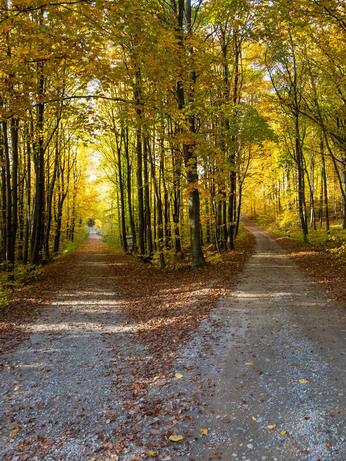 Photo by Damian Siodłak on Unsplash Photo by Damian Siodłak on Unsplash Choices can be difficult. Wanting to make the perfect one, I can struggle with “buyer’s remorse.” It can be about a purchase or any decision I have made or need to make (especially if others are concerned). Did I take enough time to make the best choice? What if I didn’t? Was I right? Was I wrong? I will replay the options. Especially if my choice does not please others, I will replay it even more. Sometimes it can become compulsive, stuck on a loop in my brain. We all have experienced the stress that comes from obsessive over-thinking. Over the years, I have tried a variety of ways to “throw a stick in the spokes” and stop the constant thought-cycle. The practice of Centering Prayer has been one thing that, gradually, has made a difference. Centering Prayer can be a challenge as one gets to discover all the places the unruly mind wants to wander instead of stay in the present (it is certainly not interested if the present has feelings it doesn’t want to feel!). As I have grown in acceptance of the brain’s (sometimes bizarre) escapades to do anything but feel reality and rest in God, I have grown in awareness of when I am joining its invitations to run away to the circus of compulsivity. Here are two simple ways of returning home:
The keys to both are patience and gentleness (two indicators or “fruits” of the Holy Spirit as described in Galatians 5:22-23). It may take a while, but with gentle persistence old compulsive paths will be less and less traveled. And relief will rise with your every return to the pathways of peace. Pause for a moment. Notice your breath. Are you shallow-breathing or holding your breath? Both are common when in front of a screen. Both are common during times of fight, flight, or freeze. Our heart rate increases and breathing becomes restricted readying us for whatever action is needed to help us survive a threatening situation. While being in front of a screen is a false threat (our survival is not at stake), it can trigger the same bodily responses. What we see, hear, and read on screens often keeps threats right in front of us keeping us in fear of what looms around every corner…and it’s certainly heightened this year! Interestingly enough, the breath is in the spotlight this year—the ability to breathe being threatened by COVID-19, breath being forcibly cut off by a police officer’s knee, fear of being unable to breathe when wearing facemasks, fear of others’ breath who are not wearing facemasks… Survival breathing can become the norm when our days (and nights) are filled with hypervigilance (compulsively on the lookout for threats). This “survival breathing” can lead to a host of issues from sleep problems to overly consuming food or information, from chronic anxiety to the inability to make wise decisions. Our bodies, minds, emotions, and souls need the fullness of the breath. Without breath, there is no life (literally and metaphorically). Poet Mary Oliver speaks of the latter when she writes, “Listen, are you breathing just a little and calling it a life?” To live fully, creatively, and wisely, we need the breath. Earlier this year, I taught “Meditating with the Aramaic Beatitudes.” In Jesus’ native language of Aramaic (which lends itself to various images & layers of meaning), one translation of the very first Beatitude found in Matthew 5:3 reads, “Ripe are those who find their home in the breath (the Spirit); they shall be attuned to the inner reign of God.” The word for “spirit,” rukha in Aramaic (like ruach in Hebrew and pneuma in Greek), can also be translated as “breath.” What does finding your home in the breath (which is also Spirit) offer you today? How is breathing foundational to your ability to be present to God, yourself, and others? What actions can you take to help others’ “find their home in the breath,” too? After all, we are all connected by the same breath! Several years ago after teaching classes on “Breathing as a Spiritual Practice,” I created a short, 3-part video series with light-hearted exercises to give our diaphragms needed attention so that a slow, relaxed breath is more easily remembered and accessible to us. Even in times of trouble. You can find those videos here. I’m going to practice some with my facemask on to remind myself that the mask itself does not need to be a threat! While I hope you’ll watch the videos, you do not have to in order to receive the gift of a full, slow, relaxed breath…it’s available to you right now (just like God’s presence)! So pause for a moment again. Whether privately without a facemask or publicly with a facemask, whether in front of a screen or not, let breathing be your prayer today. Breathe deep the Breath of God. For a related article, see "What do the Coronavirus and the Reign of Love have in Common?: A Facebook Post from June 27th"
 Can you recall a moment of synchronicity? "Meaningful coincidences" or moments connected by meaning and means not of your own making? When it happens (or at least when I notice), I cannot help but sense that Something is seeing me and something is being communicated. A word, image, or subject matter is repeatedly offered in a variety of ways (unexpected conversations, dreams, nature, ordinary events, extraordinary events, etc.). When synchronicity occurs, I take it as an invitation from God to pay attention. In my own life, it's often a call to grow (consciously) or a signal that growth is occurring (unconsciously). I had a moment of synchronicity last week. On Tuesday, I mentioned Fowler's Stages of Faith Development in relation to listening to the Holy Spirit, so it was fresh on my mind a day later when I headed to Congregation Ohabai Sholom with a friend for a 4-week class on The Heart of Jewish Meditation & Spirituality taught by Rabbi Rami Shapiro. Although we had missed the first week, unbeknownst to me, the discussion for the second week was mystical Judaism's 5 Levels of Consciousness! These levels are based on the words of Deuteronomy 6:4-9 and walk one through the deepening levels of relationship with/to God...the exact subject material of my latest blog! Clearly I was to step further into the stages of spiritual growth! So I'm paying attention, perhaps you're beckoned to pay attention, too. Just as I briefly shared about Fowler's stages, I'll briefly go over the Levels of Consciousness as I understood them in class. The 5 (Ascending) Levels of Consciousness: 5. Yechida (Spirit) Singularity, pure Soul/God, no barriers between "I-Thou" 4. Chayah (Soul) "Spacious mind," connected to everyone/everything in the Universe, Truth is beyond ideology, more justice & humility expecting nothing in return, no self-seeking, Higher Self, non-dualism, "I and Thou" 3. Neshamah (Mind) "Narrow mind," ego, survival, intellectual comprehension, identity, spirituality reflects back ego/tribalism, "What's in it for me or my group?", dualism, "I-it" 2. Ruach (Heart) Emotions and "spirit" of person, personality 1. Nefesh (Body) Animal existence- breathing, eating, sleeping, walking around Just as each of Fowler's stages of faith development are necessary, so too, are the 5 levels of consciousness. While the level of Nefesh or body-consciousness is the lowest level, that does not mean it is to be denigrated. After all, we need a body! Rabbi Rami asks us to consider, "Which [level] is calling right now?" If it's the body level, please tend to the body! The point of the levels is to remind us that we're beckoned to grow beyond simple existence and emotions. At some point in time, we're also beckoned to grow beyond our own ego and tribe. In fact, authentic spiritual practice will always seek to move us from Neshamah to Chayah or from "narrow mind" to "spacious mind." Rabbi Rami describes narrow mind as "seeing the self as separate from and often in conflict with the world and God." And spacious mind he describes as "seeing the self and other as part of a greater wholeness we call God." In my Christian experience, a lot of Christian reading, teaching and preaching tends to keep people in the Neshamah level or the realm of ego and tribal identity. This can be seen in viewing Christianity as the one right religion (or even narrower, one denomination as the truest or most orthodox) and celebrating being on the "winning side." It's the belief that Christian music is the only music a Christian should listen to. It can also be seen in people's image of God, often a masculine Being resembling the Greek god, Zeus. Remember, such concrete, dualistic thinking whether described by Neshamah or Fowler's "Mythic-Literal or "Conventional-Synthetic," is a necessary stage or level, but it's not the ending point. Confused? Wondering what spiritual practices can help you shift from Neshamah to Chayah (or move from narrow mind to spacious mind)? Well, they will not look the same for everyone! This is why a spiritual director can be such a helpful companion on your journey. Plus our ego-minds are masters at using religious language to trap us in Neshamah when it's time for us to grow (we are not apt to see it on our own). This is why I have my own spiritual director! By the way, Rabbi Rami says there are no ways or practices to move from Chayah to Yechida, it is simply pure grace. I'm not surprised, Chayah gets us out of our own way, preparing the way for Yechida, the highest level of consciousness characterized by non-dualism and Union with the Divine. This should resonate with those who practice Centering Prayer, the silent prayer of consent which prepares one for the gift of contemplative prayer or resting in God. If/when one ever gets to taste Yechida, can you guess what the earmark is? Pure Love. Of God and neighbor. Sound familiar?
Next week: More Synchronicity to Share & The Shema (Deuteronomy 6:4) as a Breath Prayer  Listening to the voice of the Holy Spirit?! What does that even mean? And is it even necessary? Read Jesus' words with me in John 14 when he is preparing his disciples for his departure: "If you love me, you will keep my commandments. I will ask the Father, and he will send another Companion, who will be with you forever. This Companion is the Spirit of Truth, whom the world can't receive because it neither sees him nor recognizes him. You know him, because he lives with you and will be with you...I have spoken these things to you while I am with you. The Companion, the Holy Spirit, whom the Father will send in my name, will teach you everything and will remind you of everything I told you." John 14: 15-17, 25-26 (CEB translation). Wow, it's going to be a leap in faith development for the followers of Jesus! With their leader about to leave, what will they do?? They've been following him, literally and figuratively, on this path of life. Wherever he goes, they go, even tracking him down when left alone! The good news he tells them is that while they can't go where he is going, they're not going to be left alone, either. When he leaves, it's not time to abandon the path, it's time to grow in their faith journey. The Bible gives us a wonderful glimpse into the spiritual growth of individuals and faith communities, first Israel then the early church, beginning with their infancy. James Fowler gives us a good glimpse into the stages of faith development. Fowler was a theologian, a professor at Emory, and United Methodist pastor who described stages of faith development beginning with his first book in 1981, Stages of Faith: The Psychology of Human Development and the Quest for Meaning. See the charts below or watch this video to get an overview of each stage. Remember that although age ranges are mentioned, anyone can be at any stage at any age. In stage 3, Synthetic-Conventional, we see that following and conforming to the teachings of an authority figure, group, or institution is the earmark of a stage 3 person/group's faith and identity. This is not a bad thing, of course. Who or what we choose to follow can either be leading us down the path of life or death, blessings or curses, as the books of Deuteronomy and Proverbs remind us. Following a leader, doing what a leader tells you, and getting affirmation within the group is a healthy and necessary stage of faith development. However it is a stage, not the ending point. Too many people (and faith communities) stagnate at a particular level of development and never progress beyond stage 3. Knowing this, Jesus invites his disciples to venture where many choose not to go. In the context of the disciples' story, the One who they listened to and learned from is about to leave and, unbeknownst to them at the time, MUST leave if their faith is to grow. It's the only way the seismic shift from perceiving truth from outside themselves (in the person and words of Jesus Christ) to perceiving truth from inside themselves (through the voice of the Spirit within) will take place. Jesus cannot always do the thinking for them! It is their task to awaken to the reality of the Companion, Advocate, Counselor, who is with them and accessible wherever they go. They first got to know the ways and means of this Spirit in the presence and person of Jesus. Now in his absence, the presence of Jesus will be made known to them by this same Spirit dwelling in their innermost being, their truest self. They will learn that the very "mind of Christ" is accessible to them, willing to teach, remind, comfort and companion...if they are willing to stop, listen, remember and receive. There comes a time, whether it happens slowly or abruptly, when we are beckoned to leave what we know and grow. It can be confusing and intimidating. But you'll know it's time. When that time comes, remember... You are not alone. All you need to know for your next step is available to you. Let a spiritual director companion you as you learn to listen to the Companion within, growing in wisdom as you follow the way of Christ, walking the path of Love.
 Lainey demonstrating the pose for "Patience." I kept falling out of this pose last week...imagine that! Lainey demonstrating the pose for "Patience." I kept falling out of this pose last week...imagine that! The day after school ended, my kids and I headed out-of-state to visit friends and family. I was tired before this trip down memory lane began so I really needed to engage the Fruit of the Spirit (patience & gentleness don't come easily in such circumstances)! I tried breathing in and out each fruit, dwelling on those especially needed. However, being out of my normal exercise routine, this didn't suffice...my whole body wanted to join in on the practice. So I found myself revisiting the prayer postures that my daughter and her yoga teacher, spiritual director, and author of Holy Listening with Breath, Body, and the Spirit, Whitney Simpson, put together to remember and receive the Fruits of the Spirit. Together we wrote a blog series for Ministry Matters in 2014, found here. With the celebration of the Holy Spirit's presence & power happening just two days ago on Pentecost Sunday, I thought I'd take another trip down memory lane by reminding us all of these prayer postures and the devotionals that go with them. Come taste and see... Holy Trinity, as we allow ourselves to feast on the fruit of You in our lives, may we become what we eat. May we embody love, joy, peace, patience, kindness, goodness, faithfulness, gentleness, and self control, and truly become the Body of Christ in this world. Amen. It came in the gentle breeze
that day, with surprise my soul opened its arms. Another, not the volcanic vigor of many days, with my run to protect my ego-security. A voice in the ordinary speaking of years spent with knowledge and morality impressing, yes, protecting. Insight slipped right into my soul. Repetition now recognition when body is relaxing. A smile instead of shame. Herein is the strength of gentleness, of kindness, of whisper Of the ordinary, Holy Flame! Three final breathing practices offering an even deeper experience of the Spirit of Life through our breath. Continue to experience a full breath and incorporate your breath into prayer. Continue to learn what a full breath feels like through 3 more breathing exercises! Greater calm, clarity & creativity are offered to us by the Breath of Life, are we ready to receive such a gift? |
AuthorKasey is a scarf, ball and club juggling spiritual director just outside of Nashville, TN. Play helps her Type-A, Enneagram 1 personality relax, creating space for poetry and other words to emerge. She also likes playing with theological ideas like perichoresis, and all the ways we're invited into this Triune dance. Archives
January 2024
Categories
All
|
By clicking “Sign up for E-News” I consent to the collection and secure storage of this data as described in the Privacy Policy. The information provided on this form will be used to provide me with updates and marketing. I understand that I may modify or delete my data at any time.
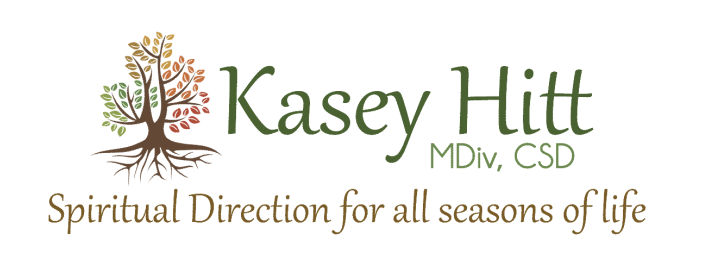



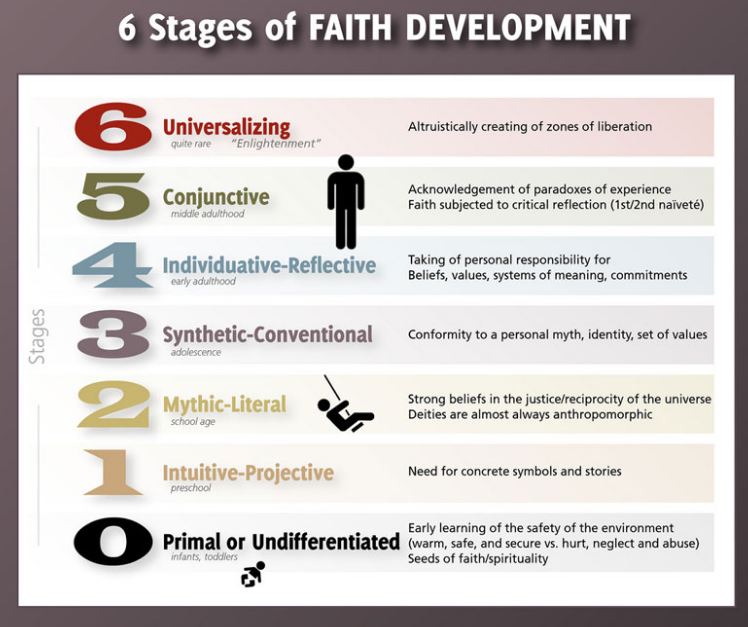
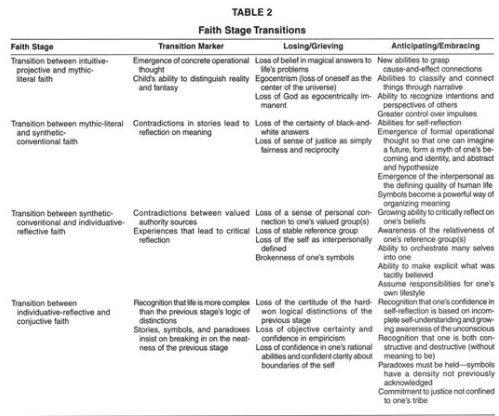
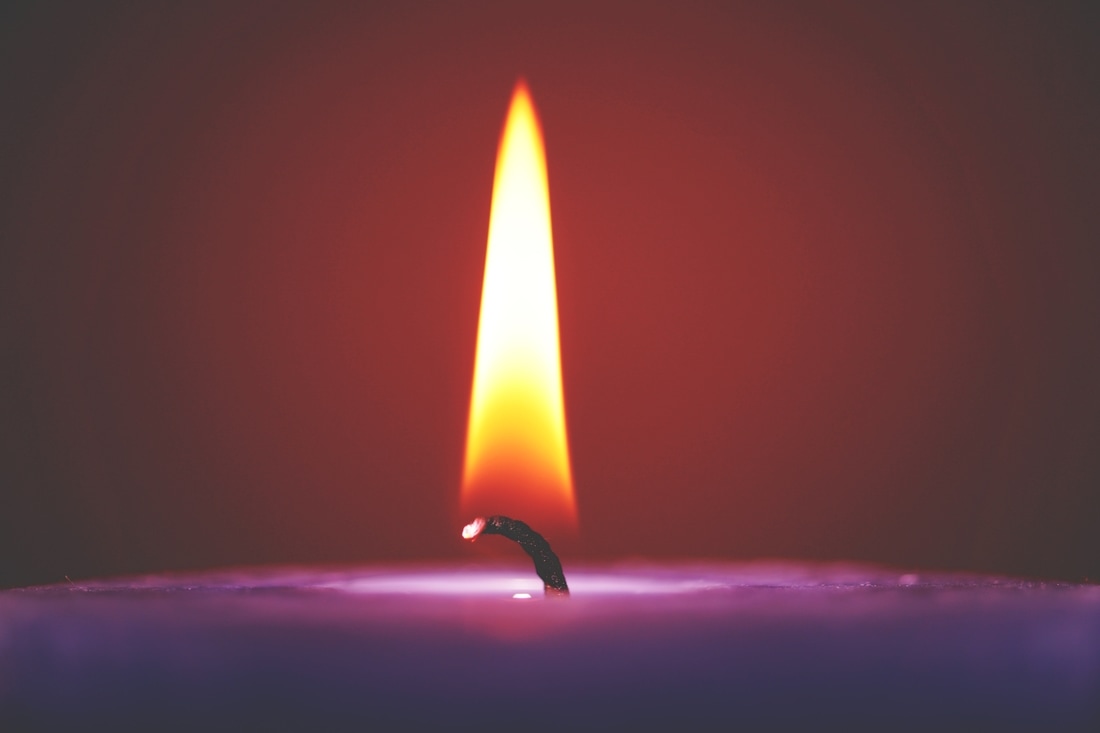
 RSS Feed
RSS Feed

